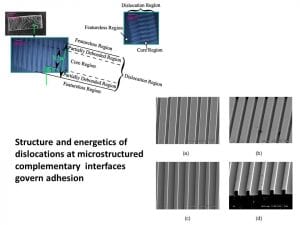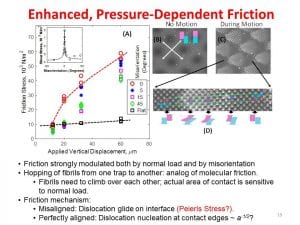Shape-complementary patterning of two soft material surfaces creates an interface with highly selective adhesion and tunable friction. The interface spontaneously creates arrays of dislocations with mixed edge and screw character.
Adhesion
We have studied how one can endow a surface with selectivity of adhesion. One way is to use shape complementarity, either wavy surfaces with matched profiles or pillar-channel surfaces. Another way is to use charge complementarity.
Demonstration that shape-complementary ridge-channel structures accomodate misorientation by forming interfacial screw dislocations.
Study of dislocation structure and energetics in relation to adhesion.
Geometry of dislocation density and orientation for misaligned structured surfaces with lattice parameter mismatch.
Friction
Dislocations at interfaces can also be used to create highly tunable friction. This is ongoing work.
Adhesion/Friction of bioinspired shape complementary structures




